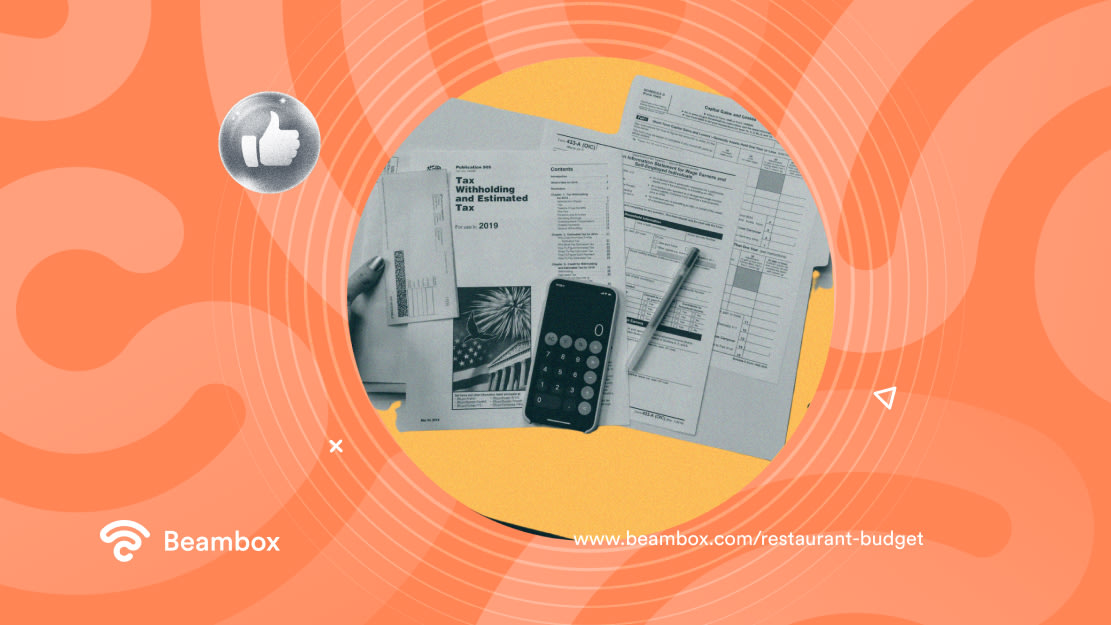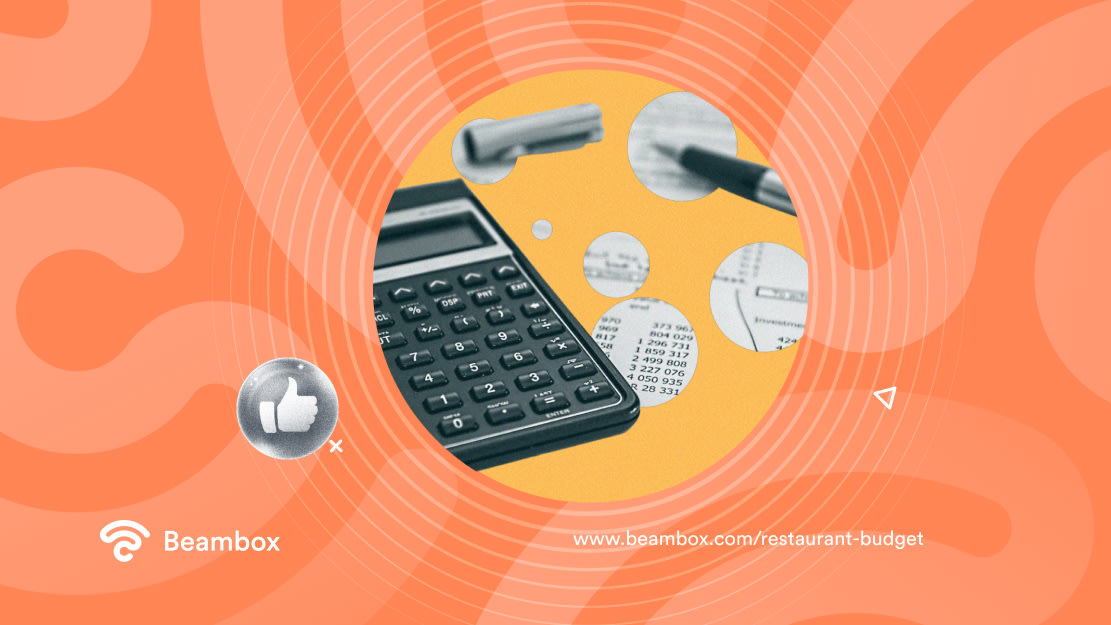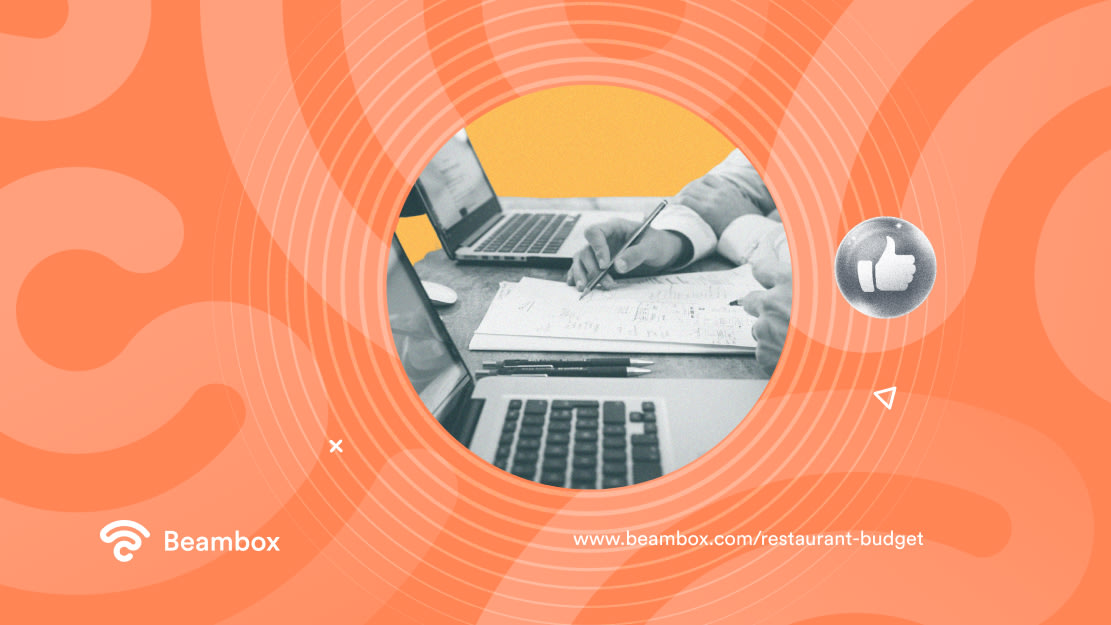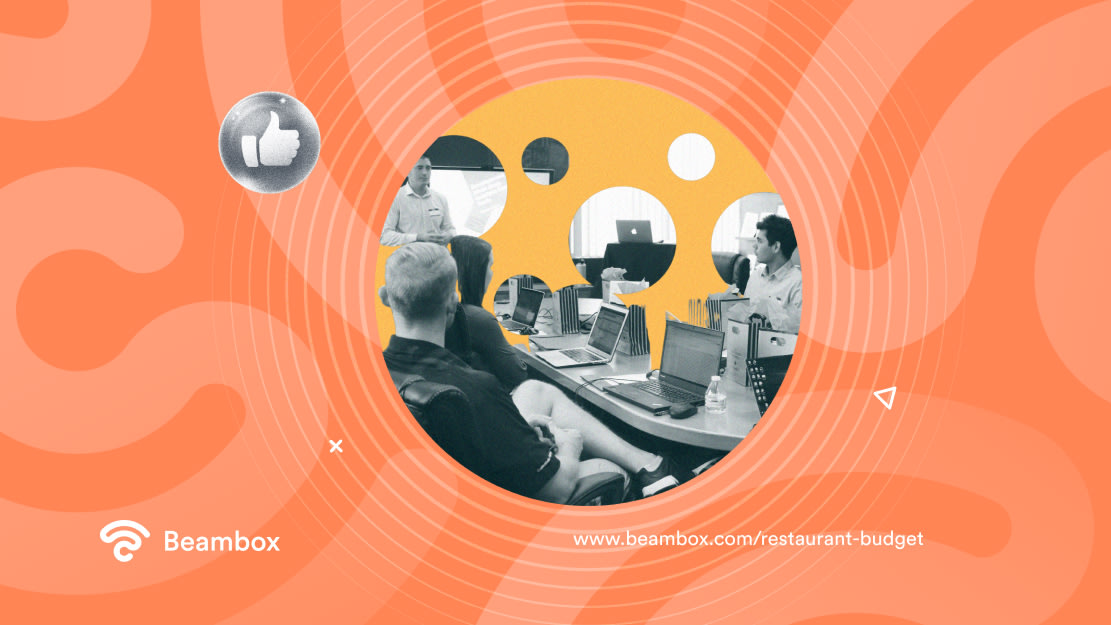Restaurant budgeting is your first step to knowing how much money you need for expenses for running a restaurant. Budgeting helps you plan and manage your finances effectively. It ensures adequate funds for purchasing ingredients and equipment, paying staff, and utility bills. Creating a budget can help you make better decisions about pricing, menu development, and cost control strategies to maximize profitability. This could be because one section of your restaurant needs more expenses. However, working within your budget can help you make the right decisions.

How to Budget a Restaurant
Do you want to learn how to budget a restaurant the right way? A great budget plan is of the utmost importance when opening your restaurant. A realistic budget will pave the way to success if carried out effectively.
Here are some guidelines you can follow when it comes to restaurant budgeting:
What Are the Three Types of Budgets?
The first step is recognizing that there is more than one type of budget. A restaurant business budget is a financial plan that outlines the income and expenses for a specific time.
Balanced budget: In a balanced budget, your expenses equal your revenue. This results in no loss or profit. A balanced budget is a financial goal for businesses, as it ensures you are not spending more than your earnings. Creating a balanced budget requires careful planning and monitoring of expenses. There are also other types of budgets, which include:
- The operating budget. It focuses on day-to-day finance
- The capital budget. It involves long-term investments and expenditures.
Surplus budget: A surplus budget occurs when your revenue exceeds your expenses, resulting in a positive financial outcome. This extra money can be helpful for various purposes, such as:
- Savings
- Investments
- Paying off debts
It is crucial to manage the surplus funds carefully. This will ensure long-term financial stability and growth.
Deficit budget: A deficit budget occurs when your expenses exceed your revenue, resulting in a negative financial outcome. This shortfall of funds may require borrowing or cutting back on expenditures. It is crucial to address a deficit budget promptly via strategies such as increasing revenue, reducing expenses, or additional funding. All of this is to avoid further financial difficulties. Cutting down on restaurant costs is essential to ensuring stability in your budget.
After going through the above types, you will undoubtedly aim for a balanced or surplus budget.
Identify and Categorize Expenses
The second step in creating a budget for a restaurant is to identify and categorize expenses. Keep a daily record of all the costs and income in your business books. Keeping a daily account will help you know your restaurant’s sales pattern, making adjustments easier. Checking your budget every day will help you cut costs where necessary. The budget will also help you determine how much profit your restaurant is making.
Restaurant Budget Template
A restaurant budget template helps you manage your finances by keeping track of your expenses. It allows you to distribute funds for categories like food and beverage costs, labor, marketing, and miscellaneous expenses. Using a template helps you identify areas where you may be overspending. This way, you can make the necessary adjustments to stay within your financial goals.
First, write down all your costs and expenses on a worksheet before transferring all the information to a software template. Write down your resources and your net income. Doing this will give you a clear picture of how much money you have available to allocate to different categories. Planning a budget can help you divide your expenses between fixed and variable costs.
How To Create a Budget Template
With so many types of restaurant expenses, keeping control of your finances is not an easy job. Writing down your income and expenditures on the worksheet creates a clear picture of your finances.
However, creating a restaurant budget template can help you track and manage your expenses more effectively. It allows you to identify areas where you can cut costs or allocate more funds. This ultimately improves your overall financial performance in your restaurant business budget.
Below is a step-by-step guide on how to create a budget template.
- Step 1: Decide what kind of budget template you need. You can choose a weekly budget template, a monthly budget template, or a yearly budget template.
- Step 2: List your gross income accordingly in the budget for your investment.
- Step 3: List all the expenses in the weekly, monthly, or yearly budget template.
- Step 4: Total the cost and revenue for each category in your budget template. The calculation will give you a clear picture of your financial situation. It will help you identify areas where you can cut costs or increase revenue.
- Step 5: Review and analyze your budget regularly to ensure that you stay on track and make necessary adjustments.
By following these steps, you can create a comprehensive budget template to manage your restaurant business’s finances effectively.
You can download the budget template in the file format of your choice.

What Is Included in a Restaurant’s Budget?
A restaurant’s business budget includes various expenses. They consist of:
- Food and beverage cost
- Labor
- Tent or mortgage payments
- Utilities
- Marketing and advertising
- Equipment and maintenance
- Insurance and taxes.
All of these are the restaurant’s costs, and you can categorize these costs into three parts in your financial statements.
Prime costs: Prime costs refer to the expenses tied to the cost of goods sold (COGS) of products or services. These costs are essential for the everyday operations of a restaurant and directly impact the restaurant’s profitability. A restaurant can improve its performance and operations by managing its prime costs. These costs are under the management of restaurant owners. Thus, they come under the category of controllable expenses for a restaurant business.
Labor costs: Labor costs are another significant component of prime costs for a restaurant. The cost includes wages, salaries, and employee benefits, including chefs, servers, and kitchen staff. Efficiently managing labor costs through proper scheduling and staffing can help control expenses and maximize profitability. Training programs and technology can improve productivity and reduce labor-related expenses in the long run.
The prime cost formula is total COGS, and total labor = prime cost.
Overhead costs: Overhead costs come under the term monthly expenses in the restaurant industry. These costs include rent, utilities, insurance, and maintenance. Managing overhead costs is crucial for maintaining financial stability and ensuring long-term success in the restaurant business.
The overhead calculation formula is overhead/total monthly sales x 100 = overhead as a percentage of sales.

How To Reduce the Prime Costs of a Restaurant
If you want to increase profits, you need to reduce your expenses. Here are some ways to reduce the prime cost of your restaurant.
- Implement a comprehensive inventory management system to minimize food waste and control costs.
- Regularly monitor stock levels, optimize ordering processes, and identify any areas of excessive consumption or spoilage.
- Streamline your menu offerings by focusing on the most popular and profitable items.
- Remove less popular dishes to reduce food costs.
- Negotiate with suppliers and secure better pricing or discounts on ingredients and other necessary items.
- Increase prices on your menu items according to food fluctuations.

How To Manage Overhead Costs in Your Restaurant
Knowing how to manage overhead costs to your advantage is also essential. Here are some of the overhead examples and how to reduce them:
Mortgage or Rent on Your Premises
A mortgage is a loan to finance the purchase of a property. This could be the building or space for your restaurant. It typically involves monthly payments for some time, including principal and interest.
Rent refers to the amount paid regularly to occupy or use a property not owned by the business. The size, condition, and location of the premises are the determining factors for rent. It is an overhead cost for most organizations that do not own the property.
Use the tips below to reduce these overhead costs.
Property Tax
A property tax is a tax that the government imposes on the value of a property by determining its value. The amount of property tax paid can vary depending on factors such as the location and size of the property.
Things to consider to manage property tax:
- File an appeal if your property tax is too high.
- Try not to build anything to enhance your property’s appearance.
- Look for exemptions in the property law.
Utility Bills
Utility bills are monthly expenses that cover the cost of essential services such as electricity, water, gas, and internet services. These are monthly bills for the use of these utilities. Managing utility bills is crucial for businesses to ensure efficient use of resources and control costs.
Here is how you can manage utility bills:
- Save on utilities throughout your restaurant’s premises. Train your staff to turn off any unnecessary lights.
- Keep electrical appliances unplugged when not in use to minimize energy consumption.
- Invest in smart technology such as energy-efficient equipment. Such types of kitchen appliances will reduce your bill.
By following these practices you can help utility bills and build a more sustainable operation for your restaurant.
Permits and Licenses
Permits and licenses are legal documents. You need to apply for them to get permission to operate a restaurant. It ensures compliance with health, safety, and zoning regulations. These permits and licenses include:
- A food and beverage service permit
- A building permit
- An occupancy permit
By law it is necessary to obtain these permits for opening a restaurant business.
This is what you can do to reduce the cost of permits and licenses:
To get a fee reduction on licenses and permits, read the requirements for the time of operation carefully. By starting your business during the calendar year, you can get a reduction in fees. This is for the quarter in which your operation begins.
Insurance
Insurance for a restaurant is a type of coverage that protects the business from financial losses and liabilities. It includes general liability insurance, which covers accidents and injuries on the premises. Property insurance protects against damage or loss to equipment, inventory, or the physical building.
To reduce the overall insurance fee you should:
- Research the insurance market and compare quotes to ensure the best coverage at the most competitive price.
- Implement safety protocols and training programs to minimize the risk of accidents or injuries.
- Increase the deductibles on your policies, as this can result in lower monthly premiums.
- Review your coverage regularly to ensure you are not paying for unnecessary or redundant policies.
- Join industry associations or groups that offer group discounts.
Salaries
Salaries are a significant expense for a restaurant business. This takes up a large portion of the operating costs. It is important to ensure that employees are fairly compensated, and the business remains financially stable.
To manage labor costs with wages rising, you will have to work on the following best practices:
- Examine employees’ schedules.
- Cross-train your staff.
- Minimize overtime.
- Take advantage of technology to reduce paperwork.
What Is a Restaurant Marketing Budget?
The money you want to spend on your restaurant marketing budget is for promotion and advertisement. This includes fees for various marketing methods such as:
It would help if you had a dedicated marketing department to manage and execute various strategies. But instead of going through the lengthy process of interviewing and hiring a team of marketers, go with Beambox.
Beambox is a marketing company, and with their all-in-one marketing platform, they can improve customer engagement and retention rates. They ensure they promote your business, help attract new customers, and increase sales revenue by working within the restaurant budget. Sales forecasting is another service Beambox offers. By employing Beambox, your restaurants can effectively stand out from competitors in the restaurant industry. Start your Beambox free trial today.
Get Started With Free WiFi Marketing
Beambox helps businesses like yours grow with data capture, marketing automation and reputation management.
Sign up for 30 days free